8/1/2018
Something for Your Woody Wish List
Matthew Chappell
The dog-days of summer are upon us and I for one use this time to finally sit down and seriously look at what woody plants are coming to market next year. Sometimes, these are plants that may be tough to get liners of, but, generally, I like to check out plants that should be available to most growers next year, even if in small numbers.
As a plant breeder and Cooperative Extension Nursery Specialist at a public university, it amazes me the leaps we as an industry take annually when it comes to new traits being introduced into the trade. That’s especially true when you open up a “new plants” publication from a decade ago and compare it to some of the plants on the following pages.
Wow, woody ornamental plant breeding is no longer a side-venture for plant geeks and nurseries. There are serious resources being pumped into cultivar development and it’s certainly taking woody ornamentals to a new level. Watch out annuals and perennials—us woody plant nuts are gunning for you!
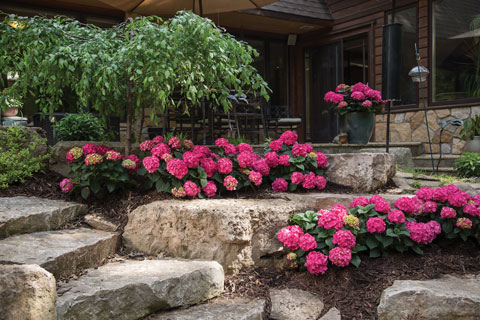 Bailey
Bailey
Endless Summer Summer Crush Hydrangea (Hydrangea macrophylla)—Hydrangeas don’t have to be blue and this cultivar looks great in alkaline soils where it sports raspberry-red mophead blooms. In acidic soils, it’s more purple than blue and its depth of color is quite stunning. It’s a relatively compact plant that tops out at 3- to 4-ft. tall, and like many newer cultivars, seems to withstand flagging quite well. And, yes, like all Endless Summer Hydrangeas, it will bloom reliably in Zones 4 to 9.
Bailey
First Editions Lunar Magic Crapemyrtle (Lagerstroemia spp.)—When the first purple-foliage crapemyrtles was being trialed for release, I saw them in Mississippi in August. While unique, they 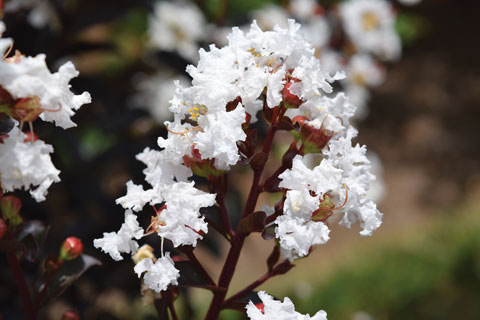 were a hot mess of powdery mildew and cercospora, and the deep pink flowers on purple foliage were cool, but I wanted white flowers. Fast forward about 10 years and we now have cultivars that really excite me including clean purple foliage cultivars (especially late in the season) like Lunar Magic that throw white flowers that really pop on deep purple foliage. It’s a medium-sized crapemyrthe at 12 ft. in height and 4 to 5 ft. in width and has a hardiness range from Zones 7 to 10a.
were a hot mess of powdery mildew and cercospora, and the deep pink flowers on purple foliage were cool, but I wanted white flowers. Fast forward about 10 years and we now have cultivars that really excite me including clean purple foliage cultivars (especially late in the season) like Lunar Magic that throw white flowers that really pop on deep purple foliage. It’s a medium-sized crapemyrthe at 12 ft. in height and 4 to 5 ft. in width and has a hardiness range from Zones 7 to 10a.
Encore Azaleas
Encore Autumn Bonfire Azalea (Rhododendron spp.)—It’s nice to find plants with multiple uses and Autumn Bonfire fits the bill. This is mainly due to its small stature as a 3-ft. rounded evergreen shrub that blooms and blooms and blooms some more. It makes a great border, or second layer 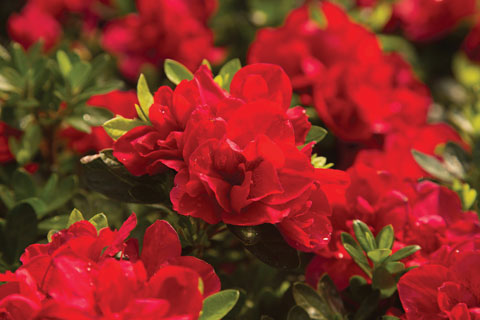 plant, in a garden. It looks solid in a mass planting where height is a concern (a.k.a. commercial property). It makes a great container plant. And its blooms are a cardinal red that makes me salivate, some of which are double, while others are single. Like most Encore azaleas, it does well in Zones 6a to 10b.
plant, in a garden. It looks solid in a mass planting where height is a concern (a.k.a. commercial property). It makes a great container plant. And its blooms are a cardinal red that makes me salivate, some of which are double, while others are single. Like most Encore azaleas, it does well in Zones 6a to 10b.
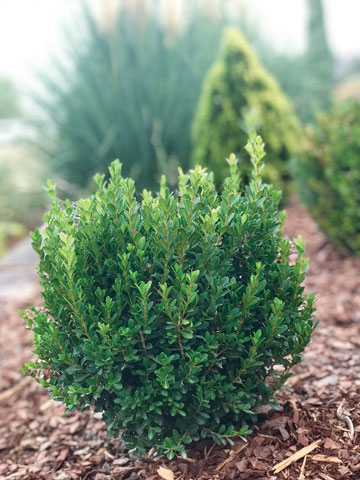 Garden Debut
Garden Debut
Baby Jade Boxwood (Buxus microphylla var. japonica)—You may be shaking your head thinking, “Another boxwood.” However, this is one tough, compact and manageable plant that’s just about the nicest cultivar I’ve run across in my travels. Its super-fine evergreen foliage holds its hue throughout the year and makes for dense hedges. I particularly like the 3-ft. rounded form that works for smaller gardens or focal areas. Like most Buxus microphylla, it’s hardy in Zones 5 to 9.
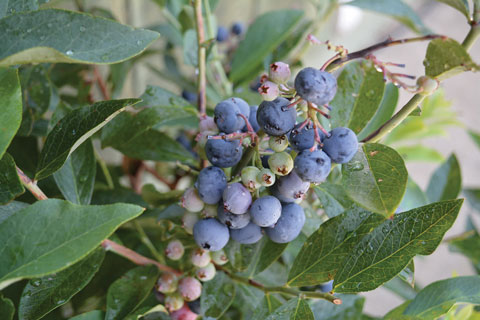 Gardeners Confidence
Gardeners Confidence
Frostberry Delight Blueberry (Vaccinium ashei)—Blueberries as ornamentals were virtually unheard of a decade ago, but today they continue to gain steam, riding the wave of Millennials who crave functional (edible) ornamental plants. Frostberry has large (dime to nickel-sized) berries that ripen mid-season over an extended period as long as 12 weeks. Fruits are an attractive sky blue against glaucous blue-green foliage. Growth is strong, but not overly vigorous, well-suiting it to home and ornamental gardens. Plants have also demonstrated self-fruitfulness, a trait not frequently found in older blueberry varieties. With time, it’ll become a 6-ft. tall shrub with hardiness between Zones 6b to 9 (the plant is actually hardy to Zone 5, but fruit set is unreliable farther north).
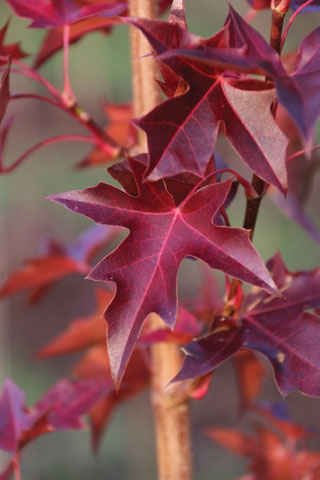 J. Frank Schmidt & Son
J. Frank Schmidt & Son
Urban Sunset Maple (Acer truncatum x platanoides)—Yes, finally some trees! You can always count on cool new tree introductions out of J. Frank Schmidt & Son, who, by the way, has my favorite plant program in UtiliTrees (look it up folks). Anyway, on to Urban Sunset, which is a hybrid maple with a 35-ft. height and 20-ft. spread and that’s hardy to Zone 4b. This is one of those trees meant for street and other urban life. It’s been through a 30-year selection process and selected for, well, every possible calamity that could happen in 30 years. Drought, snow load, reliable fall color (red to scarlet), crappy soils, disease and pest resistance, etc. It takes a lickin’ and keeps on performing.
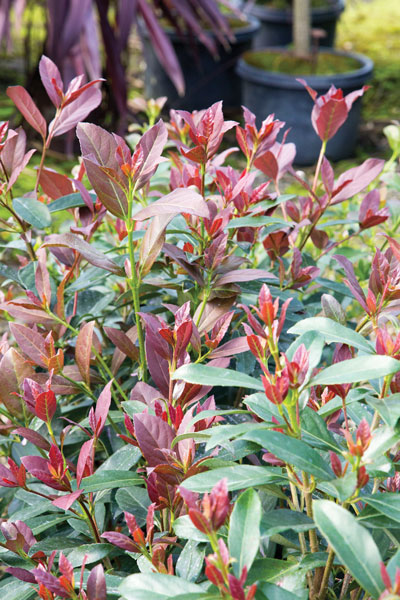 Southern Living Plant Collection
Southern Living Plant Collection
Coppertop Sweet Viburnum (Viburnum odoratissimum)—Evergreen viburnums don’t excite a lot of gardeners, because unlike deciduous species with flowers, showy fruit and good fall color, evergreen species have fruit that’s frequently covered by green foliage and lack fall color, meaning only the flowering period is of ornamental value. Well, in steps Coppertop that boasts maroon/copper new growth that lasts into late spring and looks pretty awesome against white spring blooms. The fruit isn’t plentiful, but it’s a good compromise for the showy foliage. And when used in a formal hedge that receives a midsummer pruning, you’ll get a second flush of colorful foliage on this Zone 8 hardy shrub.
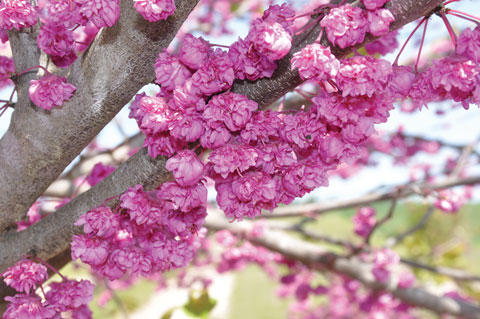 Star Roses and Plants
Star Roses and Plants
Pink Pom Poms Redbud (Cercis canadensis)—When I give garden talks and sing the praises of redbud, regardless of cultivar, I always get pushback about the fact that people want something new that makes flowering more exciting and they don’t like the look of seed pods, particularly in the fall (or the trashy appearance when they fall). For those reasons, I’m excited about Pink Pom Poms, which offers larger double flowers in the spring and is female-sterile, meaning no more “trashy” seed pods for the obsessively clean gardener. It also has nice glossy foliage that’s somewhat reminiscent of Cercis canadensis var. texensis. It’s hardy across the current (and native) range of redbud and of a similar size.
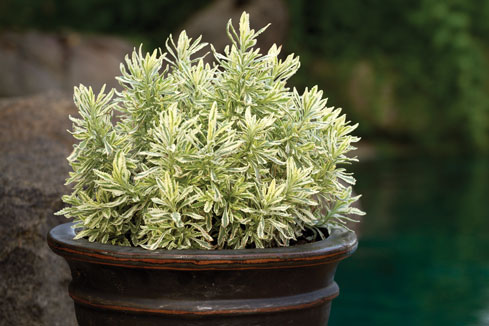 Sunset Western Garden Collection
Sunset Western Garden Collection
Meerlo Lavender (Lavandula allardii)—First and foremost, don’t confuse this with the Lavandula x intermedia that so many in the northeast and plains can grow while taunting those of us in Zones 9 to 10 who continually kill lavender. Nope folks, this is a lavender bred and raised for Zone 9 to 10 gardens (Sunset Zones 15 to 17; 19 to 24). It’s a beautiful lavender at that, with variegated cream to emerald green foliage on a 30- to 36-in. rounded plant. As a whole, Lavender allardii are the most heat, humidity and water-wise lavenders you’ll find in the trade. Meerlo is an exceptionally vigorous cultivar that holds its beautifully variegated and highly fragrant foliage, and sports pale blue flowers throughout summer. Oh, and did you know that you can dry leaves for sachets and moth repellent? GT
Matthew Chappell is a professor at the University of Georgia and editor of our Nursery & Landscape Insider e-newsletter.